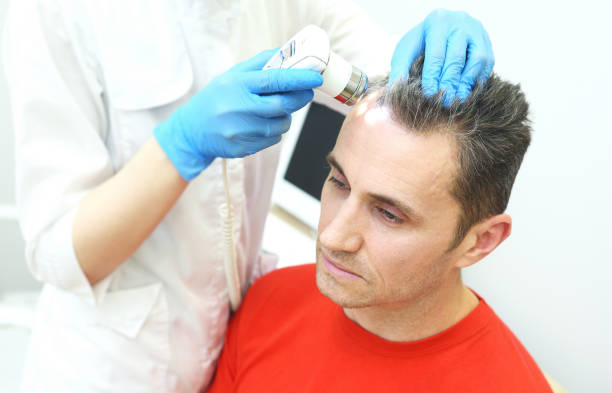Effective Scalp Psoriasis Treatments and Management
Scalp psoriasis causes persistent red, scaly patches that can be itchy and embarrassing. Although it cannot be cured, many medical and self-care approaches can control symptoms. This guide outlines topical and systemic treatments, phototherapy, natural remedies, hair-care tips, triggers to avoid, and expected costs to help you manage scalp psoriasis confidently.

Scalp psoriasis is a long-term autoimmune condition that produces inflamed, flaky patches on the scalp. While there is no definitive cure, a variety of therapies—ranging from topical medicines to systemic drugs and phototherapy—can significantly reduce symptoms and improve quality of life. Combining medical treatment with careful hair care and lifestyle adjustments typically yields the best results.
Medical treatments commonly used
Most treatment plans start with topical therapies applied directly to the affected areas. Common topical options include corticosteroids to reduce inflammation, vitamin D analogs that slow abnormal skin cell growth, and coal tar formulations that help control scaling. These agents are available in forms designed for the scalp such as solutions, foams, gels, creams, and medicated shampoos, which make application more practical and comfortable.
When psoriasis is more widespread or does not respond to topical care, clinicians may recommend systemic medications. Oral or injectable systemic treatments work throughout the body to curb immune-driven inflammation and normalize skin turnover. For moderate to severe scalp psoriasis, biologic drugs—targeted therapies that interrupt specific immune pathways—have become increasingly effective. Biologics typically require specialist oversight and insurance authorization.
Practical hair-care strategies
Managing scalp psoriasis involves gentle, consistent hair care. Use mild, medicated shampoos as directed to help loosen and remove scales so topical medicines can contact the skin. Avoid products that contain harsh fragrances, alcohols, or strong styling chemicals that can aggravate the scalp. When shampooing, be gentle: avoid vigorous scrubbing and pat the area rather than rubbing it dry.
It is important to resist scratching or picking at plaques. Doing so can increase inflammation, prolong healing, and open the skin to infections. Using soft brushes, cool water, and soothing leave-on treatments can help control itching without damaging the scalp.
Complementary and alternative approaches
Several natural remedies may provide soothing relief or complement medical treatments. Aloe vera gel, coconut oil, and certain essential oils such as tea tree oil are often used to reduce irritation and loosen scales. While some people report benefits, natural therapies vary in effectiveness and may cause sensitivity in some users, so patch testing and discussion with a clinician are advised.
Phototherapy is another evidence-based option when topical treatments are not enough. Narrowband UVB light therapy, applied under clinical supervision, can slow skin-cell proliferation and reduce inflammation. For scalp-specific treatment, devices and targeted light sources are available to limit exposure to the rest of the body.
Identifying triggers and preventing flare-ups
Preventing flares often depends on recognizing and avoiding personal triggers. Common triggers include stress, cold or dry weather, certain medications, smoking, alcohol, and physical injury to the scalp (Koebner phenomenon). Maintaining a balanced lifestyle, prioritizing sleep, managing stress through relaxation techniques or counseling, and keeping the scalp moisturized can all reduce the frequency and severity of flare-ups.
Adherence to a prescribed treatment routine is crucial. Skipping doses, stopping topical therapy abruptly, or inconsistent application can undermine control. Regular follow-up with your healthcare provider ensures the regimen remains safe and effective as your condition changes.
When to seek specialist care
See a dermatologist if over-the-counter or basic prescribed treatments fail to control symptoms, if scales bleed or show signs of infection, or if the condition is causing significant pain or impacting daily life. Dermatologists can assess whether systemic drugs, biologics, or phototherapy are appropriate and can help navigate insurance authorization and monitoring requirements.
| Treatment Type | Average Cost Range | Coverage Type |
|---|---|---|
| Topical Corticosteroids | $30 - $150 per month | Often covered by insurance |
| Medicated Shampoos | $15 - $40 per bottle | May require prescription |
| Systemic Medications | $500 - $3,000 per month | Usually requires prior authorization |
| Biologics | $10,000 - $30,000 annually | Requires insurance approval |
| Phototherapy | $30 - $100 per session | Partial coverage common |
Prices, rates, or cost estimates mentioned in this article are based on the latest available information but may change over time. Independent research is advised before making financial decisions.
Putting it all together
Successful scalp psoriasis management is usually multifaceted. Combining prescribed medications, careful hair care, trigger avoidance, and, when appropriate, complementary measures like moisturizers or phototherapy often produces the best outcomes. Many people achieve meaningful improvement with consistent treatment and regular medical oversight.
Keep in mind that individual responses vary, and what works for one person may not work for another. Regular communication with your healthcare team helps tailor therapies to your needs and adjust them as necessary.
This article is for informational purposes only and should not be considered medical advice. Please consult a qualified healthcare professional for personalized guidance and treatment.






